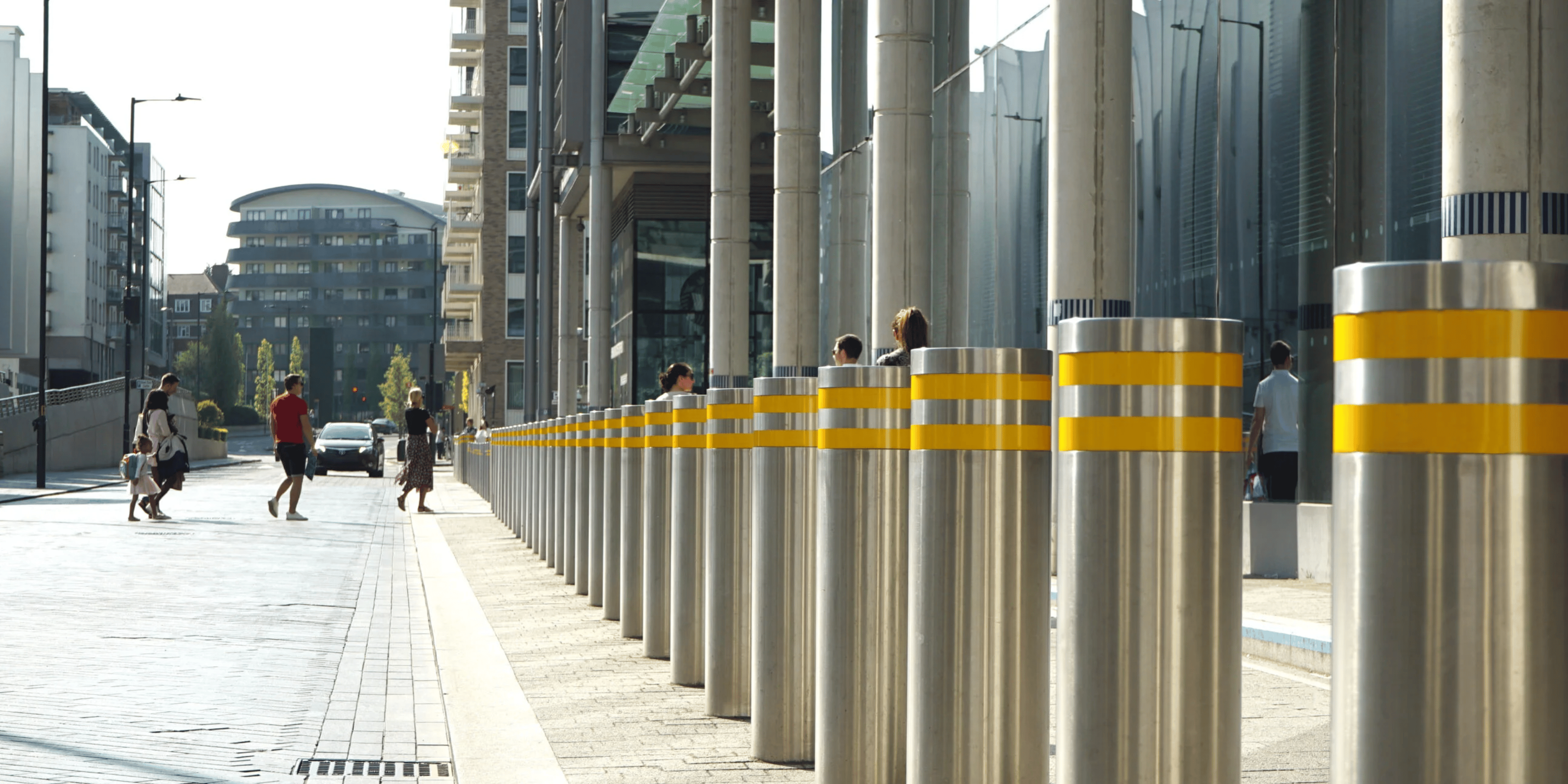
Master Secure Access Control: Steps for Construction Site Managers

Overview
The article underscores the critical steps that construction site managers must undertake to master secure access control, thereby safeguarding their sites against unauthorised access and associated threats. It highlights the necessity of integrating:
- Physical barriers
- Identification systems
- Electronic access controls
- Surveillance measures
This is complemented by ongoing maintenance and training. This comprehensive approach fosters a robust security framework that not only deters theft but also enhances overall site safety and compliance. Ignoring these measures can lead to significant financial, operational, and reputational risks for businesses. In practise, investing in security is not merely an expense; it is a vital component of business resilience and continuity. Priority First stands as a pragmatic solution, providing the expertise needed to navigate these challenges effectively.
Introduction
Effective access control is a critical aspect of security in the construction industry, where the stakes are high and the risks of unauthorised access can lead to substantial losses. Establishing a comprehensive access control system allows construction site managers to protect valuable assets, ensure worker safety, and maintain compliance with regulations. The reality is that navigating the complexities of modern security technologies and strategies presents a significant challenge.
How can construction managers implement robust access control measures that not only deter theft but also streamline operations and adapt to evolving threats? The lesson is clear: early investment in security prevents greater losses in the long run.
Understand the Importance of Access Control in Construction Security
Control measures are essential for secure access control at construction locations, serving as the primary barrier against unauthorised access and potential threats. By effectively managing entry and exit points, these systems provide secure access control to ensure that only authorised individuals can access the site, which is critical for protecting valuable equipment and materials. This approach not only deters theft and vandalism but also enhances site safety by reducing the risk of accidents and ensuring compliance with health and safety regulations.
Establishing robust entry control measures, including secure access control and regular updates and maintenance, can lead to a significant reduction in theft, vandalism, and liability claims, thereby safeguarding investments and ensuring project timelines. The implementation of biometric scanners and RFID tags has proven effective in monitoring personnel and preventing unauthorised entry, while modern turnstiles facilitate secure access control to enhance safety without disrupting workflow.
Priority First emphasises the integration of entry control systems with existing safety measures, such as comprehensive CCTV surveillance and alarm systems, to establish secure access control while creating a multi-layered protective strategy that bolsters overall site security. Recent trends reflect a movement towards advanced control mechanisms that utilise AI and real-time monitoring to ensure secure access control, allowing for immediate alerts when unauthorised access occurs. This proactive strategy not only improves security but also streamlines operations, enabling managers to focus on strategic oversight rather than routine entry management.
Industry experts highlight that the benefits of effective entry control systems, including secure access control, extend beyond mere theft prevention; they also support emergency protocols and generate detailed audit trails for compliance and investigative purposes. For example, during the construction of a multi-purpose facility in Chelsea, Priority First's tailored solutions facilitated efficient entry management, ensuring that all individuals on-site were accounted for during emergencies. By adopting these advanced security measures, including Priority First's expertise in construction and logistics, managers can foster a safer working environment while protecting their assets and maintaining operational efficiency.

Identify Key Components of an Effective Access Control System
An effective secure access control system for construction sites is crucial in addressing security challenges, particularly in the UK, where theft costs businesses over £800 million annually. To enhance security and operational efficiency, it integrates several essential components:
-
Physical Barriers: Sturdy fencing and gates are fundamental for outlining the perimeter of the construction area, effectively preventing unauthorised access. These barriers are designed to be virtually corrosion-free, ensuring durability in harsh environments.
-
Identification Systems: Implementing ID badges, biometric scanners, or key cards provides secure access control, ensuring that only authorised individuals can enter the location. This approach not only enhances security but also incorporates secure access control to streamline entry processes, minimising delays and confusion.
-
Electronic Access Control systems: Such as turnstiles and electronic locks, provide secure access control by allowing entry points to be monitored and logged. These systems can be tailored to suit particular layouts and weaknesses, ensuring secure access control while offering adaptability in managing entry.
-
Surveillance Systems: CCTV cameras play a vital role in overseeing entry points and documenting activities on-site. Modern temporary CCTV towers, equipped with high-definition cameras and night vision capabilities, can cover large areas with minimal manpower, providing real-time updates on potential threats.
Secure access control involves keeping thorough records of who enters and leaves the location, which is essential for accountability and incident investigation. Digital usage logs can connect with additional security systems, providing a comprehensive summary of activity and improving secure access control in overall security management.
The lesson is clear: by efficiently combining these elements, construction managers can create a robust control strategy that includes secure access control, reduces risks, and aids adherence to safety protocols and operational effectiveness. Early investment in these measures is essential for protecting valuable assets and ensuring a secure working environment.

Implement Access Control Measures: Step-by-Step Instructions
To implement effective access control measures on construction sites, it is essential to follow these steps:
-
Evaluate Requirements: Begin by assessing the specific safety needs of your construction site. Consider factors such as the area’s dimensions, its location, and potential hazards, including theft, vandalism, and unauthorised entry. A thorough assessment identifies vulnerabilities and informs the selection of appropriate security measures.
-
Select Suitable Solutions: Choose control mechanisms that align with your site’s needs. For high-security areas, biometric scanners offer enhanced verification, while ID badges may suffice for general access. Ensure that the systems are scalable to adapt to changing project demands, incorporating technologies like RFID readers and QR code scanners for added flexibility.
-
Instal Physical Barriers: Establish a secure perimeter by erecting fencing and gates. This physical barrier is crucial for deterring unauthorised entry and safeguarding valuable materials and equipment.
-
Set Up Electronic Access Points: Instal turnstiles or electronic locks at entry points, ensuring integration with a central monitoring system. This arrangement enables real-time monitoring of personnel movements and enhances overall security at the site.
-
Implement Surveillance: Position CCTV cameras strategically to cover all access points and key areas. Continuous monitoring deters potential intruders and provides valuable documentation of site activities. Priority First offers extensive CCTV monitoring services, ensuring 24/7 surveillance to enhance safety and protection.
-
Train Personnel: Instruct staff on entry control procedures, including the correct use of identification systems and incident reporting. Regular training sessions foster a culture of awareness among all personnel, emphasising the importance of promptly reporting unusual behaviour and thefts.
-
Monitor and Adjust: Regularly review entry logs and surveillance footage to identify unauthorised intrusion attempts. Use this information to modify protective measures as needed, ensuring that your control system remains efficient and responsive to emerging threats. Additionally, establish emergency entry procedures to facilitate swift access for first responders without compromising safety.
-
Conduct Regular Safety Briefings: Maintain a culture of protection by holding regular briefings to update personnel on safety protocols and any changes in site conditions. This ongoing communication underscores the importance of vigilance and adherence to control measures.
By adhering to these steps, construction supervisors can significantly enhance safety measures, protect assets, and ensure compliance with safety regulations. Effective secure access control mitigates risks and contributes to the smooth progress of construction projects. Priority First can integrate its services with existing protection frameworks, including logistics management, to further enhance site safety. Tailored security solutions have successfully safeguarded construction sites and operations, as evidenced in various case studies.

Maintain and Monitor Your Access Control System for Continuous Security
To ensure the ongoing effectiveness of your access control system, it is essential to implement maintenance and monitoring practices that safeguard your operations.
-
Regular Inspections: Routine checks of all entry control components—including physical barriers, electronic devices, and surveillance equipment—are vital. These inspections help identify vulnerabilities and ensure compliance with safety regulations. It is advisable to conduct these checks at least once annually, with more frequent inspections in high-traffic zones or for essential operations.
-
Update Software: Regular updates to any software used for electronic control are crucial. This practice safeguards against vulnerabilities and addresses emerging security threats. Keeping software current is integral to maintaining system integrity and enhancing operational efficiency.
-
Review Entry Logs: Periodically analyzing entry logs allows for the detection of unusual patterns or unauthorized intrusion attempts. This proactive approach aids in recognizing potential vulnerabilities before they escalate, ensuring a safer environment for both staff and resources.
-
Conduct Training Refreshers: Ongoing training for personnel is necessary to keep them informed about protective protocols and updates to the control system. Regular training fosters a security-conscious culture among employees, empowering them to identify and report potential threats, which is vital for comprehensive building audits and risk assessments.
-
Adapt to Changes: It is important to be ready to modify access control strategies in response to changes in location conditions, personnel, or threats. Adaptability in your protection approach is essential for addressing the evolving characteristics of construction sites, which are often at increased risk for theft and vandalism. Tailored risk evaluations and personalized security strategies, including threat assessments and security policy development from Priority First, can further enhance your location’s protection.
By maintaining and monitoring your access control system, you can ensure that it continues to provide robust protection for your construction site, safeguarding both personnel and assets.

Conclusion
Effective access control is crucial for enhancing security at construction sites, as it ensures that only authorised personnel can enter and protects valuable assets. The reality is that implementing a comprehensive access control system allows construction managers to significantly reduce risks associated with theft, vandalism, and safety violations. This proactive approach safeguards physical resources and fosters a safer working environment, ultimately contributing to the success of construction projects.
Key components of an effective access control system include:
- Physical barriers
- Identification systems
- Electronic access controls
- Surveillance measures
Each element plays a vital role in creating a robust security strategy that addresses the unique challenges faced in the construction industry. In practise, through careful evaluation, selection, and implementation of these components, managers can establish a secure perimeter and maintain operational efficiency.
The lesson is clear: prioritising secure access control is not merely a compliance issue but a strategic necessity for construction site managers. By investing in advanced technologies and maintaining vigilant monitoring practises, the construction industry can effectively combat security challenges. Embracing these best practises ensures the safety of personnel and assets, ultimately leading to smoother project execution and enhanced overall productivity.
Frequently Asked Questions
What is the primary purpose of access control in construction security?
The primary purpose of access control in construction security is to serve as a barrier against unauthorised access and potential threats, ensuring that only authorised individuals can access the site.
How does effective access control benefit construction sites?
Effective access control helps deter theft and vandalism, enhances site safety by reducing the risk of accidents, and ensures compliance with health and safety regulations.
What measures can be established for secure access control?
Robust entry control measures include secure access control systems, regular updates and maintenance, biometric scanners, RFID tags, and modern turnstiles.
How do biometric scanners and RFID tags contribute to access control?
Biometric scanners and RFID tags are effective in monitoring personnel and preventing unauthorised entry, thereby enhancing security at construction sites.
What role do CCTV surveillance and alarm systems play in access control?
CCTV surveillance and alarm systems are integrated with entry control systems to create a multi-layered protective strategy that bolsters overall site security.
What recent trends are emerging in access control technology?
Recent trends include the use of advanced control mechanisms that utilise AI and real-time monitoring to ensure secure access control and provide immediate alerts for unauthorised access.
What additional benefits do effective entry control systems provide?
Effective entry control systems support emergency protocols and generate detailed audit trails for compliance and investigative purposes.
Can you provide an example of successful access control implementation?
During the construction of a multi-purpose facility in Chelsea, Priority First's tailored solutions facilitated efficient entry management, ensuring that all individuals on-site were accounted for during emergencies.
How do advanced security measures impact operational efficiency?
By adopting advanced security measures, managers can foster a safer working environment, protect their assets, and maintain operational efficiency by allowing them to focus on strategic oversight rather than routine entry management.




